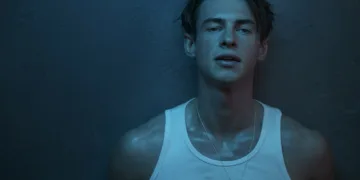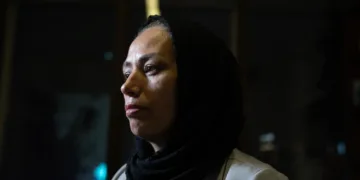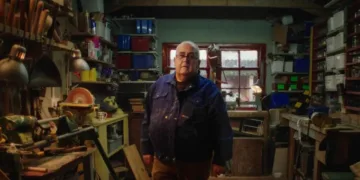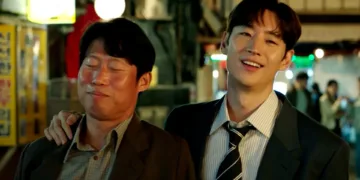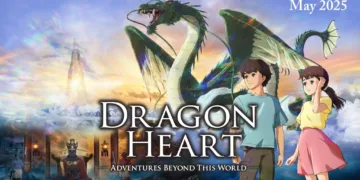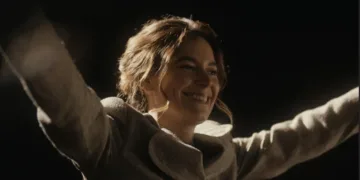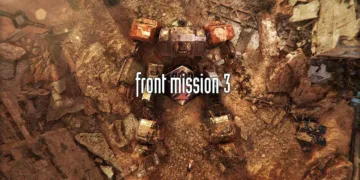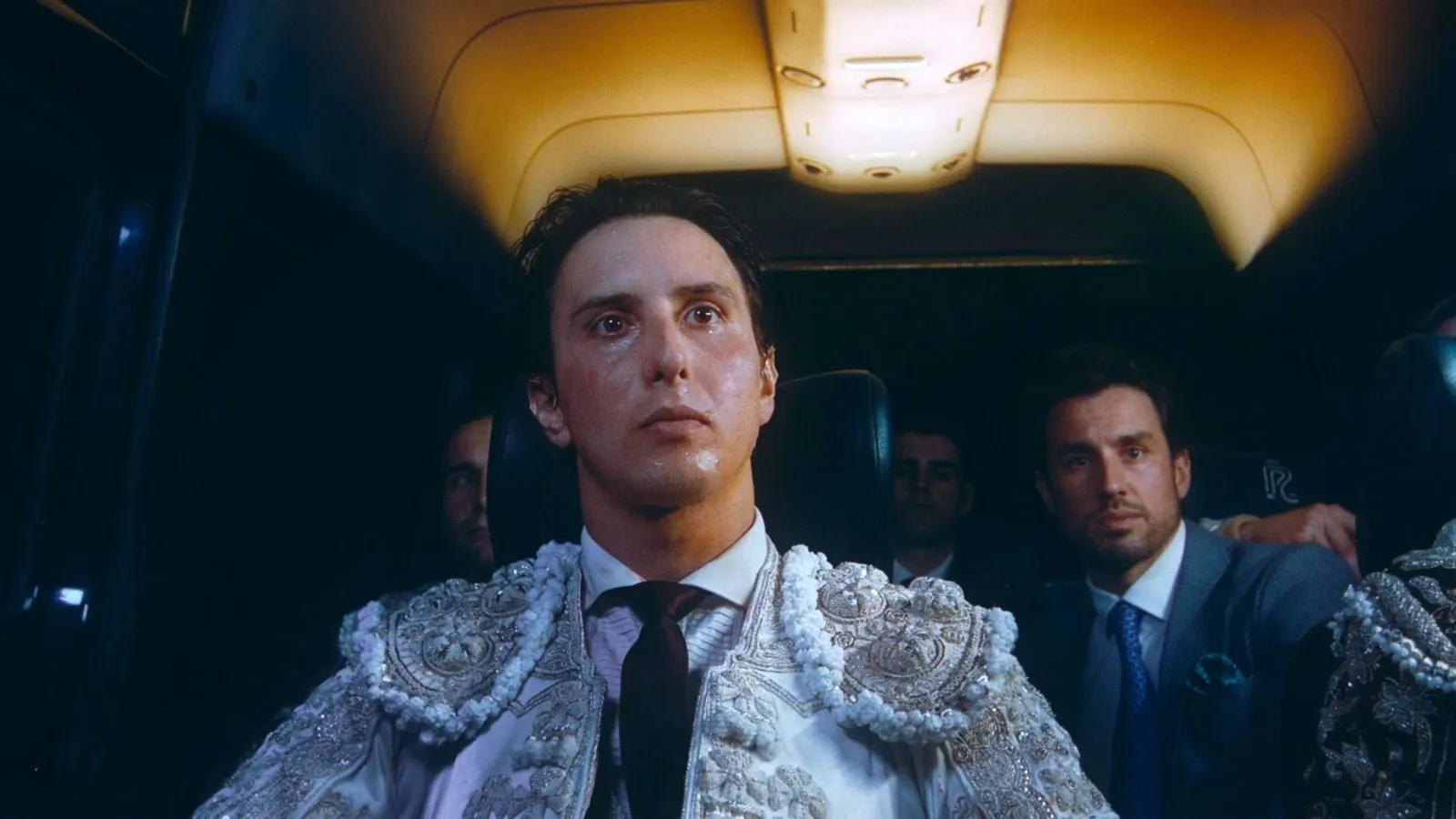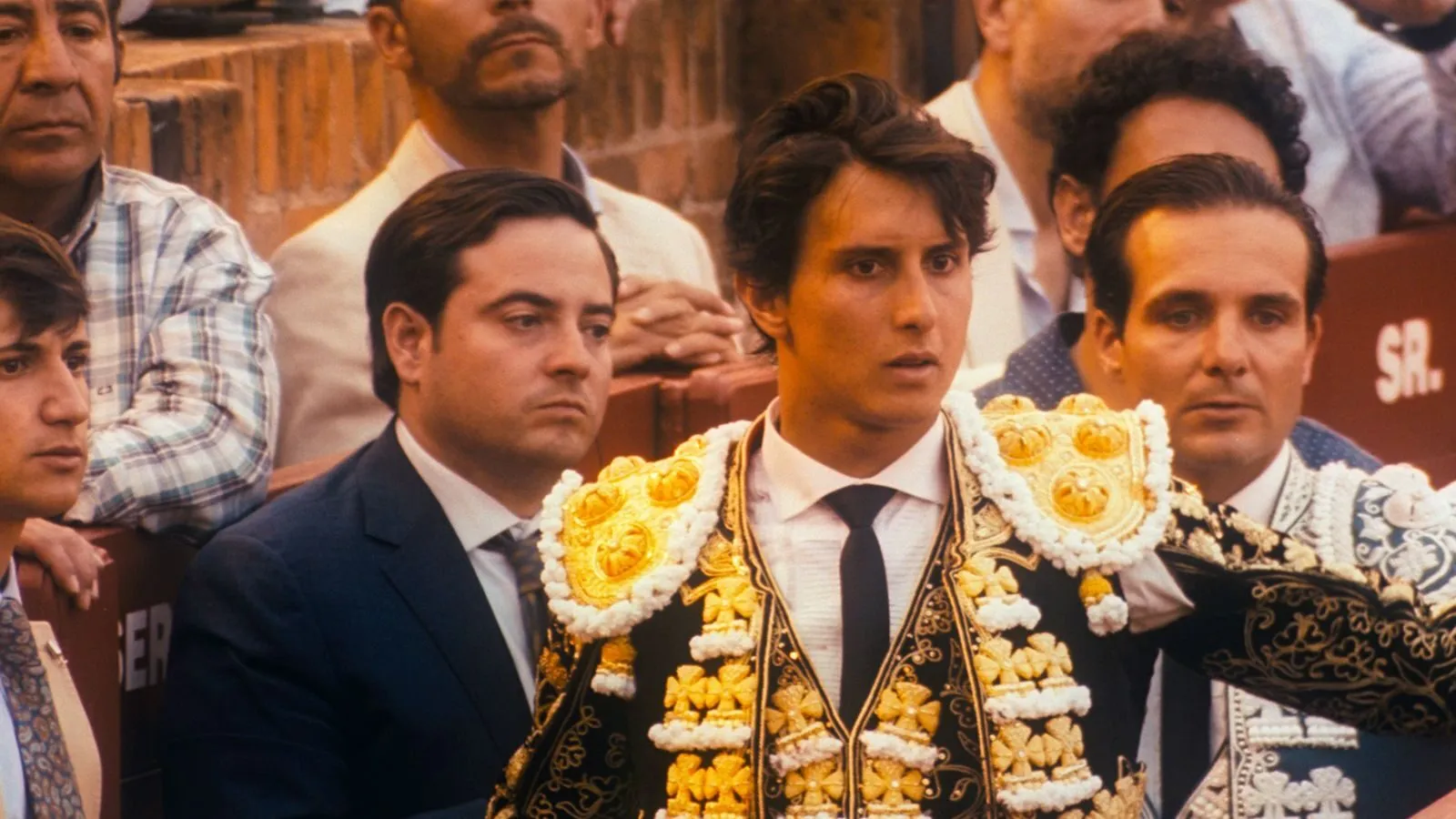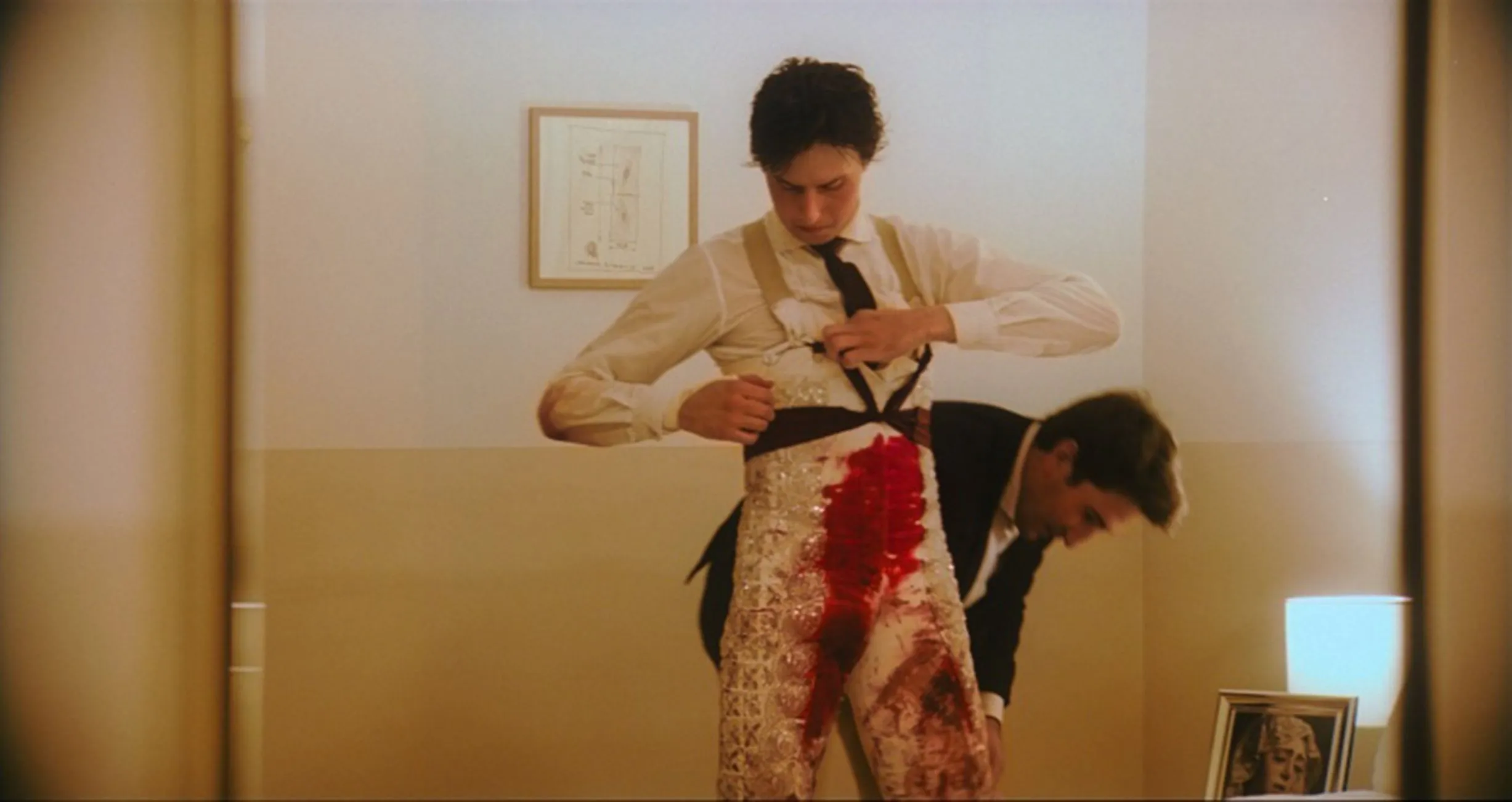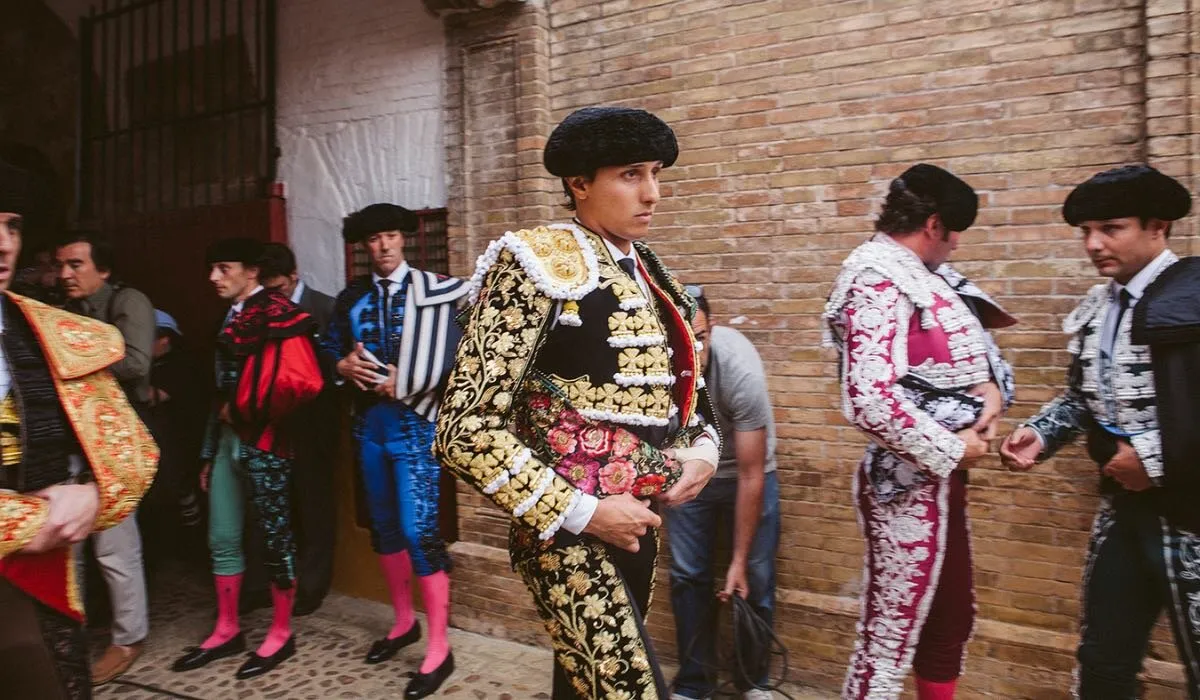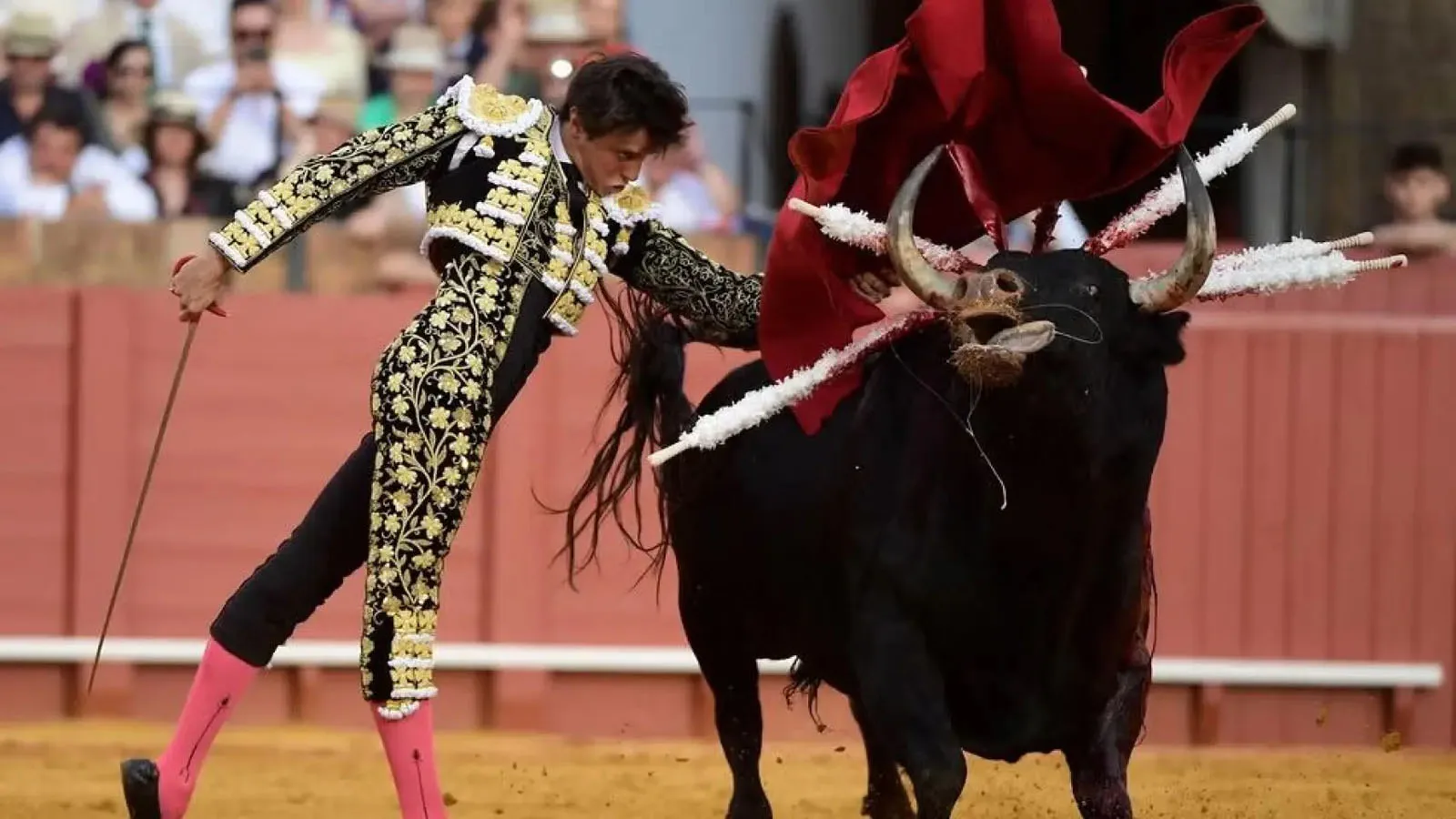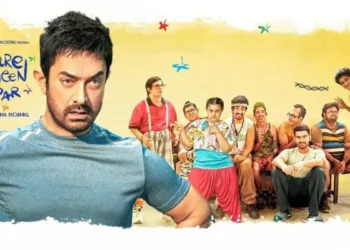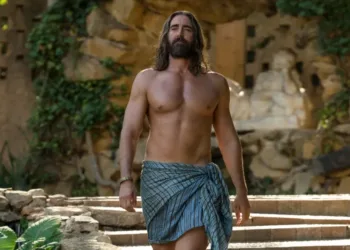How a matador’s dazzling traje de luces catches the light just before the bull collapses in a final, heaving gasp is intrinsically unnerving, as is beauty draped atop brutality. Watching François Ozon’s When Fall Is Coming reminded me of the first time I watched a bullfight—thankfully not in person, but in a blurry video during a high school Spanish class.
The instructor, a wiry man with a propensity for melodrama, paused the recording as the matador landed the fatal blow. “Art or savagery?” he inquired, his tone alternating between reverence and horror as if daring us to answer an unanswerable question. Ozon’s film raises similar questions in its own way.
There is no real bullring in When Fall Is Coming, but the film is rich in ritualism: the meticulous preparation of the mushrooms, the delicately weighted exchanges between Michelle and her daughter, and the nearly ceremonial disclosure of long-hidden truths. Like a seasoned enthusiast, Ozon’s camera lingers just long enough on these moments to make you cringe.
His use of long takes—Michelle’s quivering hands as she cooks, the unnerving stillness of her garden after an “accident”—feels like an intentional refusal to allow us to look away, to excuse ourselves from the spectacle of familial violence. You are a spectator in the stands, not just a viewer.
However, there is beauty here as well—an autumnal, sad beauty that feels as fragile and fleeting as the fluttering leaves outside Michelle’s cabin. Jérôme Alméras’s cinematography, rich in burnished golds and deep browns, gives these horrific moments an unmistakable charm. It’s the matador’s costume all over again: dazzling, almost sacred, but stained with blood.
I found myself wondering if the shine of beauty absolves the ugliness beneath or if it makes it all the more grotesque. Perhaps that is the point. Perhaps Ozon, like my old Spanish teacher, wants us to sit with our discomfort, to recognize that we are drawn to the spectacle even while it repels us. Perhaps I’m just projecting, seeing matadors where there are none and bulls in the shadows. Regardless, I couldn’t take my gaze away.
The Enigmatic Torero
There is a mythology that revolves around characters like Andrés Roca Rey, the man whose stoicism feels more like a second skin than a mask. Watching him glide around the ring, every motion perfect and deliberate, I found myself admiring and resenting him.
Admiring his discipline for its evident grace but resenting him for remaining stubbornly unknowable. Is the enigma a choice or a performance? Is it just who he is? I do not know. The film, like Roca Rey himself, appears uninterested in offering solutions.
It’s impossible to ignore the camera’s fixation on his body—the sinewy power of his arms, the taut beauty of his posture, the way his traje de luces clings to him like a second skin. There’s a homoerotic energy to it all, one that feels both deliberate and unsaid, as if we’re urged to look but not label what we find. His beauty adds another layer to his mystery, a barrier between the audience and the man within. I can’t decide whether the stare flatters or objectifies him—or if it’s both.
But what lingers the most is the hush surrounding his life outside the ring. Who is Roca Rey after the lights go down and the audience disperses? The film does not inform us, and it may not want to. It seemed satisfied to let him exist purely as a torero, a character defined entirely by his profession. To strip a man of his humanity and leave only the spectacle, I think, is a kind of violence in and of itself. Perhaps Roca Rey wants to be seen but not recognized, admired but never understood. I can’t help but feel implicated in the act of staring, but I can’t look away.
Cinematic Immersion
When Fall Is Coming takes you into its world with a unique intimacy—an absorption so total that, at times, I forgot I was watching a film. Ozon’s observational technique carries almost hypnotic power without being overtly flashy. Jérôme Alméras’ cinematography, for example, feels like a quiet act of devotion.
His camera lingers on the banal with unabashed tenderness: the way Michelle arranges vegetables on her kitchen counter, the meticulous movements of her hands as she peels mushrooms. These are not just moments of action but of presence, so tactile that you can almost feel the mushrooms’ rough skin or the warmth of the autumn light seeping through the windows.
The frame is dominated by close-ups and medium shots, resulting in an intimacy that feels both soothing and obtrusive. The camera appears to hover just close enough to capture the flicker of doubt in Michelle’s eyes, and her lips tremble as she smiles through her daughter’s scathing remarks.
It’s a delicate balance—not too close to feel voyeuristic, but close enough to make you complicit in her quiet breakdown. And then there’s the editing, which is so smooth that it’s almost undetectable, with each cut blending into the next like a thought barely formed before being replaced by another.
But what impressed me the most was Marc Verdaguer’s score, which has such a faint presence that it feels like a shadow cast by the emotions on screen. His compositions do not dictate how you should feel; they whisper, nudge, and suggest. A low hum of strings highlights Michelle’s moments of doubt; then, a beautiful piano melody emerges as she watches her grandson play. It’s not manipulative, but it’s unquestionably moving, the kind of score that lingers long after the final picture has faded.
But I wonder whether this kind of visual immersion too readily attracts me. By the way, the film’s technical accuracy makes me feel like a privileged observer, as if I’m witnessing something real and unadulterated. Or is it all a cleverly crafted mirage intended to please my sense of judgment? These questions linger, unanswered, as the concluding chords of Verdaguer’s quest hum gently in my memory.
Structure and Pacing
When Fall Is Coming has a rhythm that feels almost like breathing—steady and unhurried, but occasionally catching you off guard with a quick gasp. The film’s structure, with its repetitions and returns, reflects the cyclical nature of life: the same routines, disputes, and quiet moments of reflection that appear insignificant until they vanish.
Watching it reminded me of how time feels when you’re locked in a familiar pattern—comforting but oppressive, like a cycle you can’t quite break free from. Ozon leans into this regularity, shifting between Michelle’s days’ peaceful routine and the spurts of tension that interrupt them.
At first, the consistency is comforting: walks in the woods, careful food preparation, tender conversations with her grandson. However, as the film goes on, the repetition takes on a darker tone. Each return to the seemingly peaceful hamlet feels heavier, clouded by past experiences and unsaid fears. By the time the most violent episodes arrive—whether actual or emotional—they strike harder, their power amplified by the quiet surrounding them.
However, the pacing never feels exploitative. Ozon juxtaposes the film’s darkest moments with periods of stillness, allowing the viewer to breathe and process. It’s a subtle ballet of tension and release that unsettled yet comforted me. Perhaps that’s just me projecting, finding my rhythms in a film that refuses to haste, even as it approaches its obvious conclusion.
Themes and Subtext
Discipline is an appealing concept. There’s something about its sharp edges, clear lines, and promise of control in an otherwise chaotic world. While seeing When Fall Is Coming and its rich representation of discipline, swagger, and machismo, I couldn’t help but think of the rituals we create around chaos to convince ourselves we’ve controlled it.
Bullfighting, with all of its ritual and theatricality, feels like the ultimate embodiment of this—a dance of death disguised as art, in which blood is spilled to demonstrate dominion over nature. Ozon doesn’t dwell on the act itself, but its echoes can be found everywhere: in Michelle’s rigid perfection, in her careful rituals, and in the way she wrestles her emotions into obedience.
The film sets up an intriguing tension between nature and artifice, not unlike the tension of a bullfight. The bull, untamed and unpredictable, is a force of nature. Still, the matador, dressed in an extravagant outfit that borders on ridiculousness, is deception at its extreme.
Similar dynamics occur in Michelle’s world. Her garden, her cuisine, and her well-maintained relationships all offer the impression of order, but beneath lies a smoldering anarchy that no amount of effort can control. Ozon’s camera, always patient, seemed to revel in exposing these flaws, lingering on moments when the performance falters and the naked, messy truth emerges.
Despite its beauty, the film can’t help but feel like a quiet, almost hesitant indictment of the spectacle it depicts. Bullfighting is fundamentally violent, no matter how much artistry is used to disguise it, and Ozon appears to suggest that the same might be said about Michelle’s life as well. Her discipline, restraint, and refusal to let go—are they virtues, or are they just another type of violence, another way of asserting power when none exists?
I do not know. While watching the film, I felt torn between admiration and concern, drawn to the spectacle’s beauty even as I questioned its morality. Maybe that is the point. Perhaps Ozon, like the matador, wants us to confront the brutality of the performance, to recognize that the blood on the ground is real, even if it is covered in glitter and gold.
Emotional Resonance and Impact
There’s a strange alchemy to how a film like When Fall Is Coming elicits emotion—not with huge gestures, but with something quieter and more subtle. Not by what was shown, but by what was left unsaid and unseen, I found myself shaken. The brutality in Ozon’s world—whether family, emotional or fleetingly physical—arrives like a whisper rather than a yell. I’m still not sure if that’s better. There is no escape from it, no cathartic finale to anticipate. Instead, it pours into your head and lingers there.
Like its protagonists, the film’s portrayal of suffering is restrained but strongly felt. Michelle’s quivering hands as she prepares yet another lunch for a daughter who will never stop resenting her, and the way her grandson is laughing feels like a fragile respite from the tension in the air. These moments landed harder than any explicit confrontation could. Then there’s the question of guilt—the kind that doesn’t erupt in spectacular confessions but rests silently in your stomach. The impact is unnerving as if Ozon has tapped into a common discomfort that we all experience but rarely acknowledge.
But what struck me the most was the film’s ability to elicit empathy while being unsettling. You don’t just feel for Michelle; you feel with her as if her concerns and regrets have become your own. Nonetheless, there is a continuous discomfort, a sense that the film is including you in its emotional violence. Why am I drawn to the spectacle of her unraveling? Why does her pain feel so strangely beautiful? Even after the credits rolled, I couldn’t stop thinking about these questions.
Perhaps this is the film’s most lasting impact: it does not let you off the hook. It makes you question your complicity as a viewer, your willingness to sit in the dark and watch someone else’s suffering develop. I couldn’t tell if I felt moved or manipulated, but perhaps the distinction isn’t important. Perhaps the point was that I felt nothing at all.
Artistic Context and Significance
Albert Serra’s films have always felt like invitations to sit in discomfort, to witness the slow unraveling of time and meaning. Afternoons of Solitude—the title alone evokes melancholy—fits perfectly into his work. Yet, it feels less like a continuation than deepening his thematic preoccupations.
Serra’s interest in ritual, mortality, and the tension between beauty and brutality is palpable throughout, but what sets this film distinct is its willingness to tackle such a divisive subject as bullfighting. It neither moralizes nor turns away. Instead, it observes with a calm that borders on unnerving.
In a documentary world dominated by urgency and advocacy, Afternoons of Solitude feels almost radical in its stillness. Serra avoids the pitfalls of easy analysis, cultural nostalgia, and the political polemics that one might expect. His vision is neither condemnatory nor jubilant; it simply observes. This neutrality—or, maybe, ambiguity—makes the film so compelling. It challenges you to confront your prejudices and discomforts when the camera lingers on the ritualistic perfection of the matador’s moves or the primal, heaving pain of the bull.
But the film’s relevance goes beyond its subject matter. It invites debate—not just about bullfighting, but also about the ethics of creative depiction in general—in its refusal to provide answers or remedies. Is Serra involved in romanticizing violence, or is he exposing its contradictions? I found myself circling these questions long after the credits had rolled, unsure of my position and unsettled by the lack of clarity. Perhaps the point is to leave us alone with our ideas, contradictions, and quiet uneasiness.
The Review
Afternoons of Solitude
When Fall Is Coming is a delicately woven tapestry of beauty and brutality. This film seduces with its autumnal hues and quiet rhythms yet disturbing with its undercurrents of familial tension and moral ambiguity. François Ozon's restraint is both the film's strength and difficulty, forcing viewers to confront unsolved questions and their complicity in the spectacle of suffering. Poignant, unnerving, and genuinely human, it is a work of quiet power. For those willing to sit with its silence, it is a chilling meditation on guilt, memory, and the tenuous links that bind us.
PROS
- Rich, autumnal cinematography that enhances the film's emotional depth.
- Subtle yet impactful performances, especially by Hélène Vincent.
- A masterful blend of tonal shifts between melodrama, black comedy, and thriller.
- Thought-provoking exploration of guilt, family dynamics, and mortality.
- Evocative score that complements the film’s understated emotional beats.
CONS
- Pacing may feel slow or meandering for some viewers.
- Ambiguities in the plot might frustrate audiences expecting clear resolutions.
- Occasional tonal discrepancies can lessen the emotional impact.
- Certain subplots lack sufficient development or payoff.













